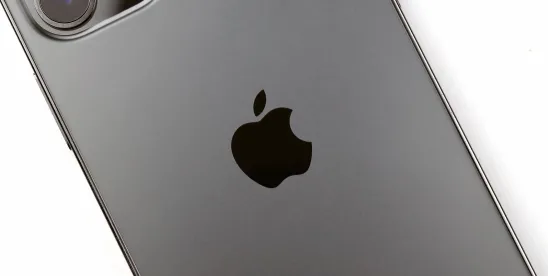Overview
On June 30, 2025, the US District Court for the District of New Jersey denied Apple’s Motion to Dismiss the U.S. Department of Justice’s (“DOJ”) lawsuit accusing the company of violating Section 2 of the Sherman Antitrust Act by monopolizing or attempting to monopolize smartphone and performance smartphone markets.[1]
In March 2024, the DOJ, together with 16 other state and district attorneys general, filed a civil antitrust lawsuit against Apple alleging that through its monopoly position in the above markets, Apple blocks innovative apps and services, making it harder for consumers to switch software and hardware.[2] The DOJ’s suit alleges Apple maintains dominance largely through restrictions on third-party developers. For example, the DOJ claims Apple degrades the quality of cross-platform text messaging, blocks growth of “super apps” that would make it easier for consumers to switch between smartphone platforms, limits functionality of non-Apple smartwatches, suppresses mobile cloud streaming services, and stifles growth of third-party digital wallets.
Apple moved to dismiss in August 2024, arguing limitations on third-party access to its technology were reasonable, while also disputing the government’s market share calculations and anticompetitive effect allegations.[3] In denying the motion, the court decided that the allegations were sufficient with respect to DOJ’s market definitions and that the case’s key allegations merit further examination at trial.
The District Court Decision
In his opinion, Judge Julien Xavier Neals found that the DOJ had sufficiently plead Apple has monopoly power in the US markets for smartphones and high-end performance smartphones. In so holding, Judge Neal rejected all aspects of Apple’s Motion to Dismiss, two of which are especially noteworthy:
First, Apple contended the DOJ’s Complaint defined the relevant product and geographic markets too narrowly. This point is determinative because in a global, as opposed to US-only geographic market, Apple has a much smaller market share due to significant international Android sales. Judge Neals rejected Apple’s assertion that the relevant geographic market is global, finding the government supported its alleged US market with factual allegations of consumer behavior, e.g., that US users demand services offered by US retailers when they purchase a smartphone and take advantage of promotions only offered domestically.[4] At the motion to dismiss stage, those allegations were sufficient to carry the government’s burden.
Nor would Judge Neal find that Apple’s broader proposed product market definition required dismissal of the complaint, finding the government had sufficiently alleged facts that performance smartphones could constitute a distinct submarket, differentiated from entry-level smartphones with less durability, lower-performance components, and fewer features. Likewise, smartphones are distinct from features phones with “less capable hardware and software options” and other portable devices such as tablets, smartwatches, and laptops, which “lack the combination of function, size, and portability that consumers rely on in a smartphone.”[5] On this basis, the court determined Apple’s alleged US market shares within the government’s asserted markets (65% for smartphones and 70% for performance smartphones) are high enough to allege monopoly power.[6]
Second, having found the government adequately pled monopoly power in properly defined markets, the court next considered whether the Complaint contained sufficient allegations that Apple willfully acquired or maintained this monopoly power through exclusionary conduct. Apple argued that its compatibility restrictions are akin to refusals-to-deal, which would invoke a more lenient presumption under US law that companies can choose with whom they do business.[7]
In declining to apply this analysis, the court noted that “Plaintiffs do not allege Apple is failing to deal with its smartphone rivals, but rather that Apple’s conduct is imposing restrictions on developers and smartphone users. Courts across the country have refused to extend the refusal to deal doctrine to such conduct.”[8] The court specifically cited the government’s recent case against Google in which the Eastern District of Virginia rejected application of a refusal to deal framework to Google’s conduct that effectively “compelled its [ad] publisher customers to use [Google’s services]”.[9]
On this basis, the court denied Apple’s Motion to Dismiss and concluded with a discussion of the government’s various allegations of technological barricades that constitute anticompetitive conduct. Such conduct includes, for example, requirements placed on super apps (middleware that runs multiple, smaller programs in one app), prevention of third-party developers from offering cloud gaming subscription services as a native app on the iPhone, designing Apple Watches to only be compatible with the iPhone, and prohibiting developers from accessing necessary hardware to incorporate tap-to-pay in cross-platform digital wallets.
At the pleadings stage, such allegations indicating Apple acts in a manner to protect its monopoly power are sufficient to establish a prima facie case.[10] To the extent Apple argued it has the right to set the terms on which third parties can access its own proprietary platform and that it should be left to Apple’s discretion “how to best design its platform, products, and services to prioritize security, privacy, and user experience”, the court found these contentions are factual disputes that must be resolved through discovery, not at this stage of the litigation where factual disputes are construed in favor of plaintiffs.[11]
Conclusion
This case comes on the heels of DOJ’s recent win in its case against Google’s advertising placement technology business[12] and is one of a series of ongoing U.S. antitrust monopolization cases against Big Tech companies such as Amazon and Meta Platforms. We expect Apple to vigorously defend the suit in what could become a years-long battle.
[1] See Order Denying Motion to Dismiss (hereafter NJ Order), U.S. et al. v. Apple Inc., case number 2:24-cv-04055 (D.N.J. June 30, 2025).
[2] See DOJ Complaint, U.S. et al. v. Apple Inc., case number 2:24-cv-04055 (D.N.J. 2024).
[3] Apple further argued, “it is simply not a viable theory of antitrust law for the Government to contend that Apple must open its own platform and its own technologies to third parties on terms and conditions that those parties prefer.” Motion to Dismiss, U.S. et al. v. Apple Inc., case number 2:24-cv-04055 (D.N.J. Aug. 1, 2024).
[4] NJ Order at 15-16.
[5] Id. at 13-14.
[6] Id. at 18, 20.
[7] Motion to Dismiss at 11.
[8] NJ Order at 22-23.
[9] Id. citing United States v. Google LLC, No. 23-108, 2025 WL 1132012, at *43 (E.D. Va. Apr. 17, 2025).
[10] Id. at 27.
[11] Motion to Dismiss at 13-14; NJ Order at 27.
[12] Assistant Attorney General Gail Slater posted to X, “ATR gets a SECOND WIN today! Judge Neals denied Apple’s motion to dismiss and rejected their arguments that the ‘refusal to deal’ doctrine applies in this case – citing Google Ad-Tech’s decision.”




 />i
/>i

